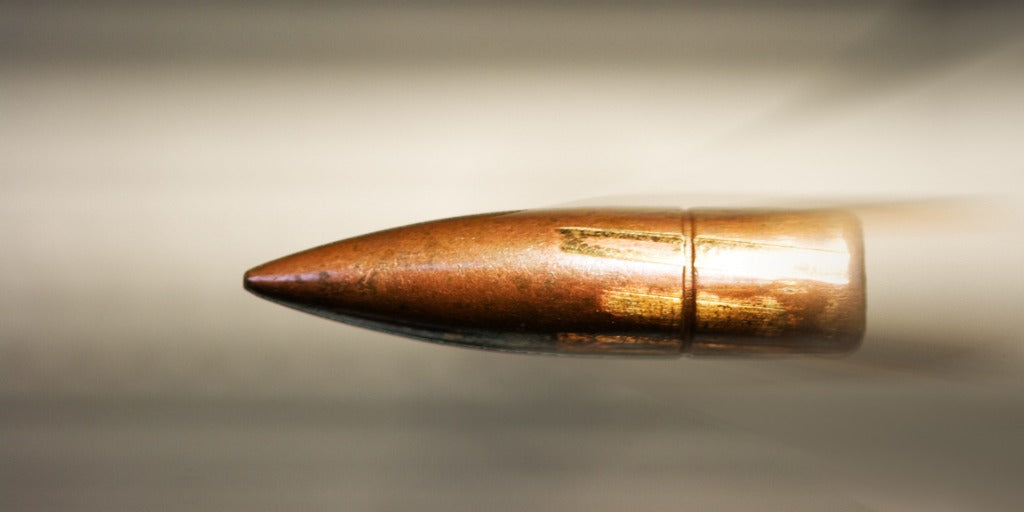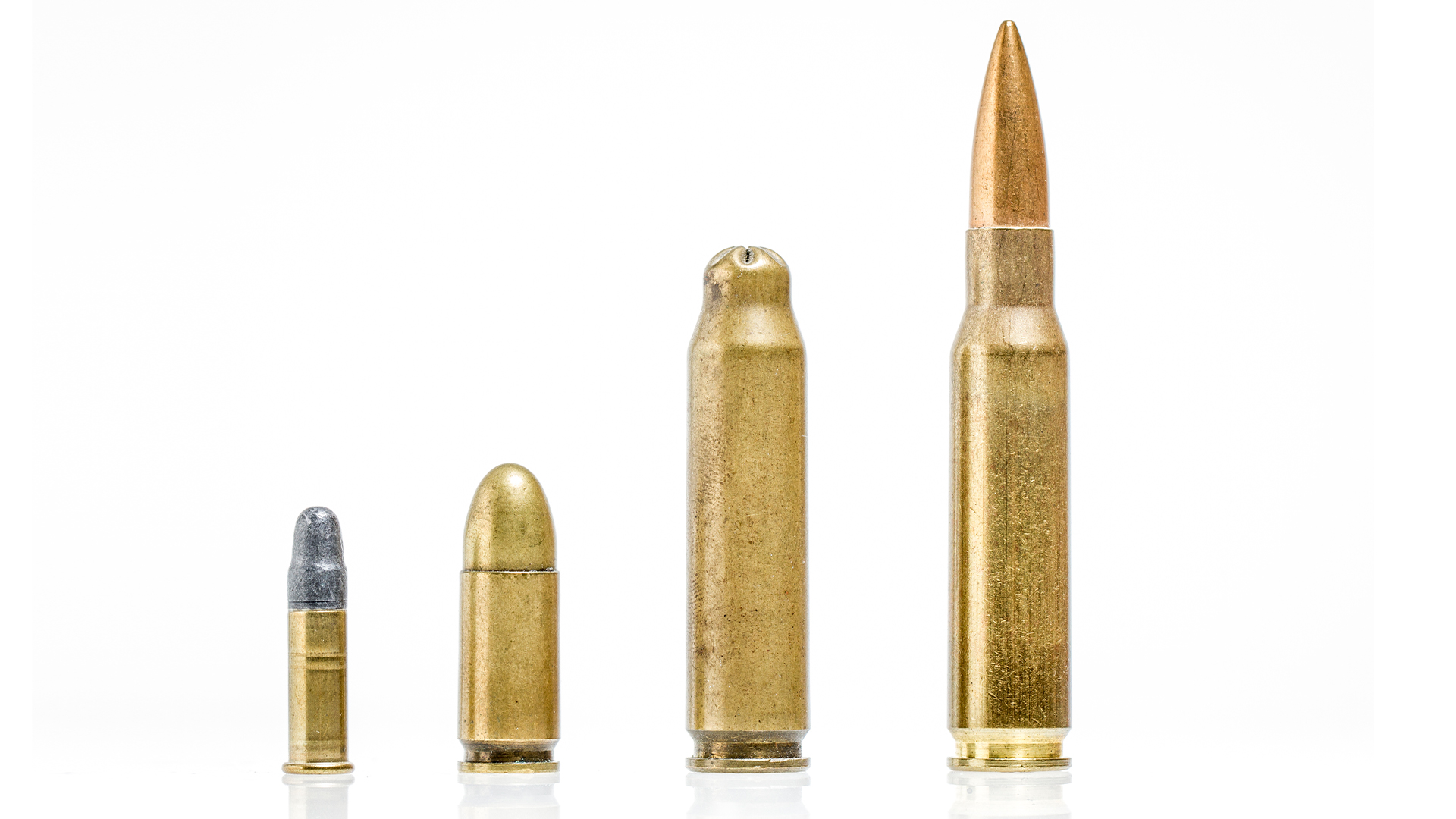A bullet can travel between 1,200 to 2,800 feet per second. The speed varies based on the type of firearm and ammunition.
Bullets are incredibly fast and dangerous projectiles. Understanding their speed is crucial for safety and scientific analysis. Different firearms and ammunition types result in varying bullet speeds. Handguns typically shoot bullets at around 1,200 feet per second. High-powered rifles can push speeds up to 2,800 feet per second.
Knowing these speeds helps in forensic science, ballistic testing, and even in military applications. Bullet speed also affects accuracy and impact force. It’s fascinating to study how modern advancements have refined the speed and precision of bullets. This knowledge is vital for law enforcement, hunters, and shooting enthusiasts.

Credit: www.topbrass-inc.com
Introduction To Bullet Speed
Bullets travel at incredible speeds. Understanding bullet speed can be fascinating. This blog explores how fast bullets move. We will look at history and modern advancements.
Historical Perspective
In the past, bullets were slower. Early firearms used gunpowder. These guns had limited range and speed. Muskets fired bullets at around 400 feet per second (fps). These speeds were impressive for their time.
As technology improved, bullet speed increased. Rifles in the 19th century reached speeds of 1,200 fps. This was a significant jump from earlier firearms. The increase in speed made bullets more effective.
Modern Advancements
Today, bullet speed has advanced further. Modern firearms can shoot bullets at incredible speeds. Some bullets travel over 3,000 fps. This is due to better materials and design.
High-speed bullets are used in various fields. Military, law enforcement, and sports shooting all benefit. Faster bullets mean more accuracy and power.
Here is a table showing different bullet speeds:
| Firearm Type | Bullet Speed (fps) |
|---|---|
| Muzzleloader | 1,200 |
| Handgun | 1,400 |
| Rifle | 3,000 |
These speeds show the evolution of bullet technology. Faster bullets have transformed many fields.
Factors Influencing Bullet Speed
Understanding how fast a bullet travels involves examining several factors. These factors influence the speed and efficiency of a bullet. Let’s explore some of the key elements.
Caliber And Design
The caliber of a bullet refers to its diameter. Larger calibers often have more mass, which affects speed. The design of the bullet also plays a significant role. Aerodynamic designs reduce air resistance, allowing faster travel. Below is a simple table to illustrate different calibers and their typical speeds:
| Caliber | Speed (Feet per Second) |
|---|---|
| .22 LR | 1,200 |
| 9mm | 1,300 |
| .45 ACP | 850 |
Gunpowder And Propellant
The amount and type of gunpowder used in a bul
Measuring Bullet Velocity
Understanding bullet velocity is crucial for various applications. From military operations to hunting, speed matters. Measuring how fast a bullet travels is not simple. Experts use advanced tools to get accurate results.
Chronographs
A chronograph is a device used to measure bullet speed. It calculates the time taken for a bullet to travel a known distance. This tool usually has two sensors placed a few feet apart. When a bullet crosses these sensors, it records the time.
The formula used is: Velocity = Distance / Time. Chronographs provide precise data. They are essential for shooters and researchers. They help in understanding bullet performance and improving accuracy.
Ballistic Gel Tests
Ballistic gel tests simulate the bullet’s impact on soft tissue. This method helps to measure bullet speed and its effect on the target. A block of gel is shot, and high-speed cameras record the event. These cameras capture the bullet’s speed and behavior.
The gel block mimics human tissue. It shows how a bullet behaves upon impact. This method is crucial for forensic science and ammunition testing. It provides visual data and helps in understanding the bullet’s performance.
| Method | Purpose | Tools Used |
|---|---|---|
| Chronographs | Measure bullet speed | Sensors, Timer |
| Ballistic Gel Tests | Simulate impact and measure speed | Gel Block, High-Speed Cameras |
Both chronographs and ballistic gel tests are essential. They provide accurate and valuable data. Understanding bullet speed helps in various fields. From enhancing safety to improving performance, these methods are vital.
Comparing Different Ammunitions
When discussing bullet speed, understanding the differences in ammunition types is key. Various factors, such as firearm type and bullet design, impact velocity. Let’s explore how different ammunitions compare.
Handgun Vs. Rifle
Handguns and rifles fire bullets at different speeds. Handgun bullets are generally slower. They usually travel between 700 to 1,500 feet per second (fps). Rifles, on the other hand, can fire bullets much faster. Rifle bullets can reach speeds of up to 4,000 fps.
Here’s a quick comparison:
| Firearm Type | Bullet Speed (fps) |
|---|---|
| Handgun | 700 – 1,500 |
| Rifle | 2,500 – 4,000 |
Handguns are often used for self-defense. Rifles are typically used for hunting and long-range shooting.
Supersonic Vs. Subsonic
Bullets can be supersonic or subsonic. Supersonic bullets travel faster than the speed of sound. The speed of sound is around 1,125 fps. Supersonic bullets exceed this speed. They often reach speeds of 2,000 to 4,000 fps.
In contrast, subsonic bullets travel slower than the speed of sound. These bullets are quieter and often used with silencers. Subsonic bullet speeds are typically below 1,125 fps.
Key differences:
- Supersonic: Faster than 1,125 fps, louder, higher velocity.
- Subsonic: Slower than 1,125 fps, quieter, lower velocity.
Choosing between supersonic and subsonic depends on the use case. Supersonic is ideal for power and distance. Subsonic is better for stealth and noise reduction.
Real-world Applications
Understanding the speed of a bullet is crucial. It has varied real-world applications. The velocity impacts several fields significantly. Below, we explore two primary areas: Military and Defense and Sport Shooting.
Military And Defense
In military and defense, bullet speed is vital. Faster bullets penetrate targets more effectively. This ensures mission success. Accuracy also improves with higher bullet velocity. Soldiers rely on this in critical situations.
Different firearms have varying speeds. For instance, sniper rifles often have higher velocity. This allows long-range engagements. The table below shows common military firearms and their speeds:
| Firearm | Bullet Speed (m/s) |
|---|---|
| AK-47 | 715 |
| M16 | 948 |
| Sniper Rifle | 853 |
High-speed bullets also affect armor design. Modern armor must withstand these speeds. This ensures the safety of military personnel. Research in this area is ongoing.
Sport Shooting
Bullet speed also impacts sport shooting. Competitors aim for precision and speed. Faster bullets reduce wind effects. This improves accuracy.
Various sports require different bullet speeds. For example, biathlon uses slower bullets. Skeet shooting prefers faster ones. The list below highlights some popular sport shooting activities:
- Biathlon
- Skeet Shooting
- Target Shooting
Equipment choice is crucial in sport shooting. Shooters often choose based on bullet speed. This decision affects their performance.
In conclusion, understanding bullet speed is essential. It impacts military success and sport shooting accuracy. Both fields benefit from this knowledge.

Credit: www.wonderopolis.org

Credit: www.livescience.com
Frequently Asked Questions
How Fast Does A Bullet Travel?
A bullet can travel between 700 and 4,000 feet per second. Speed depends on the type and caliber of the bullet.
What Factors Affect Bullet Speed?
Bullet speed is influenced by factors like caliber, gun type, and bullet design. Environmental conditions also play a role.
How Does Bullet Speed Impact Accuracy?
Higher bullet speeds generally improve accuracy over longer distances. Faster bullets experience less drop and wind drift.
Can Bullets Break The Sound Barrier?
Yes, many bullets travel faster than the speed of sound. Supersonic bullets exceed 1,125 feet per second.
Conclusion
Understanding the speed of a bullet can be fascinating. It varies based on type and design. Knowledge about bullet speed is crucial for safety and education. Keep exploring and learning about these intriguing details. Stay informed and curious about the world of ballistics.
This knowledge can be both enlightening and practical.
